Industry Analysis
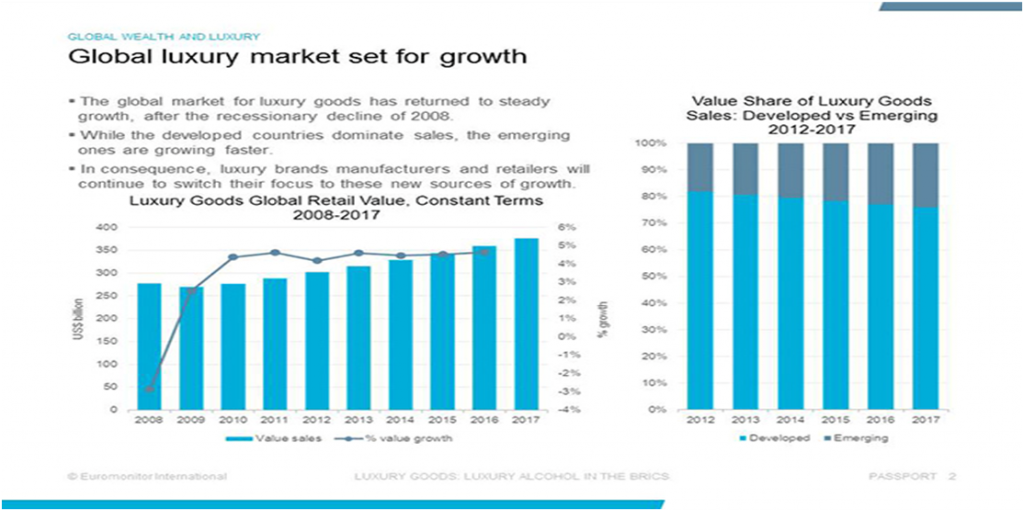
The term luxury has been defined as “something inessential but conductive to pleasure and comfort” (The Free Dictionary, 2014) and “great comfort, especially as provided by expensive and beautiful things” (Cambridge Dictionaries, 2014). Accordingly, luxury industry can be defined as an industry where consumer perceived value about products and services plays greater role and the actual benefits offered by those products and services. Moreover, luxury industry is closely associated with intangible aspects of products and services. In order to establish our luxury clothing brand, we have to make sure that there is a growing marketplace and ever growing demand for luxury clothes in the countries we wish to have our presence. According to market research analysis, there is a growing demand for luxury clothes both in the UK and worldwide. Although there is a common consensus that luxury brands suffered significant losses during and after recession, the market data discovered in this business plan proves the opposite. The Figure 1 shows that demand and growth of the marketplace for luxury clothes have been consistently rising for the last 5-6 years. Although there is a slight shift of growth for luxury marketplace to the emerging markets such as China, overall snapshot for the luxury clothes worldwide tends to be growing at significantly fast rate of around 7-8% for the next few years. The most obvious of these reasons is that there have been more people who have a large amount of disposable income from whom we have seen an increased desire for luxury goods. Brands that manufacture luxury goods have noticed this increase in demand, and have responded by tailoring their particular strategies to making sure that this demand is met in more areas of the world by opening stores in major cities that are entirely dedicated to the sale of…
By Helena Mullock
Category: Industry Analysis

Distribution channels in tourism can be divided into two levels: national and international. In national level, domestic market is served by large tourism operators and retail travel agents. In international level, on the other hand, tourism distribution may involve tourism operators, retail travel agents, as well as, wholesalers. According to Moutinho (2011) tourism distribution channels involve supplier products to be public (consumers) through channels members. Mourinho specifies individual parties in each category in the following manner: Supplier products Channel members Public Transport Accommodation Insurance Entertainment Tours Specialised services Tour operators Travel agencies Cross suppliers Suppliers Other Individuals Groups Organisations Tourism services, distributors and target population Source: Moutinho (2011) Mohapatra (2013) also discusses various aspects of distribution channels in tourism presented in above, and observes an interesting tendency in relation to these channels. Namely, according to Mohapatra (2013), the share of online sales transactions through these channels have been consistently and rapidly increasing compared to the volume of offline sales transactions during the two decades. However, Mohapatra (2013) fails to refer to any official statistical data to back up this claim. References Mohapatra, S. (2013) “E-Commerce Strategy: Text and Cases” Springer Group Moutinho, L. (2011) “Strategic Management in Tourism” CABI
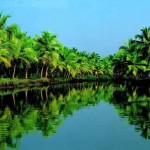
Brands operating ecotourism services can be divided into two categories: brands offering ecotourism services as the only type of service and brands that offer ecotourism along with alternative types of tourism. Communication and branding are critical success factors for new product development. However, communication and branding efforts directed towards ecotourism can be vastly different compared to communication and branding efforts associated with many other products and services due to a set of unique aspects of ecotourism. Usually, ecotourism brands position their services as nature related tourism. Major ecotourism brands aim to target their customer segment though communicating their marketing message via various channels. Generally, profile of ecotourists in Europe can be described as middle-age to elderly experienced travellers who are opinion leaders with high education and within higher income bracket (Global Ecotourism Factsheet, 2006). Major ecotourism tour operators in the UK targeting this customers segment include Travel Corporation, Thomas Cook Group plc, TUI Travel plc, Acromas Holidays ltd, Trailfinders Ltd, Holidaybreak Ltd, Portman Travel Ltd and others. The most popular ecotourism destinations include Annapurna area in Nepal, Mayan sites in Belize, Galapagos Islands, Kenya, Australia, Peru, Brazil, South Africa and others. Competition in Ecotourism Competition in ecotourism is intense with tour operators if various sizes competing with each-other. According to the World Tourism Organisation (WTO) the number of international tourist arrivals exceeded one billion in 2012, and it is forecasted to reach 1.8 billion mark by the year of 2030. Company name Number of outlets % share of outlets Thomas Cook 777 19.0 CGL 360 8.8 Midlands 102 2.5 TUI 866 21.2 Flight Centre 90 2.2 Bath Travel 65 1.6 STA Travel 51 1.2 Hays Travel 44 1.1 CGL managed services and franchises 40 1.0 Other ABTA outlets 1385 33.9 Non-ABTA outlets 267 6.5 Travel agencies in the UK…

Generally, design can be defined as “realisation of a concept or idea into a configuration, drawing, model, mould, pattern, plan or specification (on which the actual or commercial production of an item is based) and which helps achieve the item’s designated objectives” (Business Dictionary, 2014, online). Design of products and services is a separate science in marketing to be approached in a serous and responsible manner. Design process for new products and services involve the stages of initial research, concept formulation, initial design, development, construction of a prototype, engineering, and production. However, the extent of applicability of design process described above is highly limited towards ecotourism primarily due to the fact that it is highly difficult to develop new ecotourism destinations from the scratch. Accordingly, the key features of design elements of ecotourism are vastly different from the key features of design elements of the majority of products and services. Key features of ecotourism design elements can be specified as genuineness of nature environment, specific wildlife, pure ecosystem with accessible interpretation trails, level of excitement of its nature phenomenon, ecolodge, cultural immersion of local people, and historical heritage. The level of relevance of these key features to customer needs is discussed in the following part of the report. Ecotourism Design Elements and Customer Needs The following table illustrates the relevance of ecotourism design elements to customer needs: Key features of ecotourism design Discussions Genuineness of natural environment Ecotourists have high levels of interest in genuine nature places such as forests, national parks, marines, etc. Specific wildlife Higher levels of wildlife such as animals living in a free habitat have serve as effective attraction for ecotourists Ecosystem Ecosystems can be explained as self-sustaining communities within natural settings (Schmitz, 2007) and they represent a major point of interest for ecotourists Ecolodge…
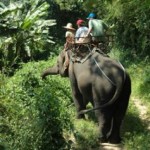
Tourism is one of the largest industries in the global scale and its increasing popularity has resulted in emergence of independent forms of tourism such as leisure tourism, business tourism, sports tourism, medical tourism, ecotourism, food tourism, religious tourism etc. Ecotourism can be defined as “tourism to places that is designed to the protection of the environment or at least minimise damage to it, often involving travel to areas of natural interest in developing countries or participation in environmental projects” (Dictionary Reference, 2014, online). Ecotourism is also known as ethical tourism, ecological tourism and nature-based tourism. Main differences of ecotourism from traditional tourism relate to travels only to natural destinations, constructions of environmental awareness, reducing detrimental impacts of tourism to the local communities and the environment, and respect for local cultures. Benefits of Ecotourism Understanding differences between customer needs and wants in an appropriate manner is important in order to fully appreciate the benefits of ecotourism to customers. Needs are essential for people for physical and social survival and they include food and water, clothing, accommodation, security, communication, love etc. Wants, on the other hand, can be explained as “the cultural manifestation of those needs” (Andrews, 2007, p.72). In simple terms, both, highly educated individuals with substantial income and floor-level factory employees with minimal income have a need for adventure and recreation. However, while highly educated individuals with substantial income might want to satisfy this need by engaging in ecotourism, floor-level factory employees with minimal income might want to satisfy the need for adventure and recreation by only attending a local park. There are various benefits of ecotourism to individuals engaged in ecotourism, to host destinations of ecotourism, and to the society and environment in general. Ecotourism offers a set of advantages to customers, i.e. individuals engaged in ecotourism…
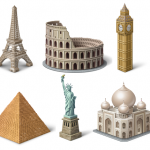
Planning process for tourism industry comprises the following stages: 1. Study recognition and preparation. The first stage in planning process is associated with the recognition of the need for the strategy in order to obtain and/or increase competitive advantage to contribute to long-term growth. Depending on available budget and a range of other factors, studies may be planned to be conducted on local regional or national levels. 2. Setting of objectives or goals for the strategy. Goals and objectives need to be formulated according to SMART principle, where the acronym stands for specific, measurable, achievable, realistic and time-bound. 3. Survey of existing data. The survey of existing data or secondary research can be done through analysing relevant information available on wide range of tourism reviews websites, newspapers, magazines, books and other online and offline published materials. The types of data that need to be collected from these sources include, but not limited to patterns of tourist behaviours, availability and quality of accommodation, impacts of environmental factors, social and cultural characteristics of tourism destinations etc. Importantly, the survey of existing data should cover all three directions: the state of issues at present, projected changes in the state of issues, and outline of principles for monitoring for the future. 4. Implementation of new surveys. New surveys are conducted in order to obtain fresh data and/or fill the information gap in relation to the tourism industry. Surveys can be conducted through online or offline questionnaires or interviews. When conducting the survey it is very important to select respondents i.e. sample group members from amongst target customers for tourism destinations. 5. Analysis of secondary and primary data. In case of questionnaires, data analysis can be done through representing collected information in bar-charts, pie-charts etc. In case of interviews, on the other hand, data analysis may involve finding common patterns…

Construction industry in UK is one of the biggest contributors to the local economy. Specifically, “in 2010 the Gross Value Added of the construction industry in the UK was £90.7 billion, 7.0% of the total GVA. There were 2.07 million workforce jobs in the UK construction industry in September 2011, 6.6% of all workforce jobs” (Maer, 2012, p.1). UK construction industry was among industries worst hit by recent global economic crisis of 2008-2012, particularly 2009 being the worst year since 1940s (Chan and Cooper, 2011). The biggest players in UK construction market include Balfour Beatty, Carillion, Laing O’Rourke, Babcock, Morgan Sindall, Skanska and others. The total turnover of top 100 construction companies in UK for 2011has amounted just under £64 billion (Construction Index, 2011). Balfour Beatty has maintained the market leadership in UK in terms of both, turnover (£105.41 million) and profit (£187 million) for several years. Skanska has been able to improve its position in the marketplace significantly during the last year to join top 10 UK construction companies by turnover, achieving the turnover of £1.267.3 million in 2011 (Construction Index, 2011). Current construction industry trends in UK involve cost-cutting as a means of survival as a direct result of the recent global economic crisis (Coughlan and Coughlan, 2011), increasing concern for environmental impacts of construction operations (Blewitt, 2008), and employee health and safety issues becoming even more significant. Construction companies in UK would find it highly challenging to address these trends in a simulations manner due to the presence of contradictions between these trends. Specifically, while construction companies have to explore the potential for cost-cutting as a result of the crisis, at the same time they are “forced” to become ‘greener’ and more environmentally friendly and these initiatives require substantial financial investments to be implemented. References Chan,…
By John Dudovskiy
Category: Industry Analysis

According to the UK Office for National Statistics (2010), the following figures represent the extent of e-commerce in UK during the year of 2009: The total amount of e-commerce sales by non-financial businesses reached £403.8 billion (24.9% increase from 2008) The volume of sales conducted over a web-site amounted to £115.0 billion The volume of e-commerce non-website sales have assessed to reach £293.3 billion The volume of businesses sold over a website amounted to 14.9%, and 6.9% of businesses have been sold over alternative platforms than websites, such as ICTs The amount of businesses purchased over computer networks were assessed to be 51.9%, and its value £466.3 billion Totally, 76.0% of businesses were found to own a website Moreover, it has been estimated that “online shoppers in UK are expected to spend £162 billion ($336 billion) per year on product via the internet by 2020” (Conrady, 2010, p.251). The above figures indicate that the significance, size, and scope of e-commerce are increasing in UK, as well as in a global level. Therefore, there are realistic reasons to believe that the demand for competent e-commerce marketing managers will increase significantly in the future, and this makes the career choice of the author of this paper wise and effective. References Conrady, R, 2010, Trends and Issues in Global Tourism, Springer Publications E-Commerce and ICT Activity 2009, 2010, UK Office for National Statistics
By John Dudovskiy
Category: Industry Analysis

There are numerous event evaluation concepts and methods that have been suggested by authors. According to Allen (2002) economic performance of any event can be considered as a primary indicator of its success if analysed from the perspective of various stakeholders. The preference to economic performance of the event as the main success measure is also given by Silvers (2008), and Tum et al (2006). The following event evaluation measures according to types of events have been proposed by one of the respected scholars in events industry Getz (2000): Firstly, Economic Development and Tourism a) Market share of specific event or events sector in a specific region needs to be analysed. b) Economic impact of the event, including the level of employment opportunities for people c) Sustainability of events. Self-supporting aspect of events can be stated to be the foundation of this specific event success measure d) Competitive advantage of events compared to the events in different locations can also be stated as success measure e) Image improvement side of the event, together with the scale and the scope of publicity that was attracted by the event. f) Rate of habitation of the event. This measure includes assisting hotel and transportation business in the region, as well as assistance provided to local residents. 2. Community a) The intensity of political support the event was able pull off and the level of local attendance b) Willingness of attendants to pay for the event c) The level of volunteer support that the event was able to generate d) The accomplishment of the event in of developing the spirit of community and pride in various stakeholders 3. Art and Culture a) The accomplishment of the event in advertising and developing local talent b) The success the event was able to achieve in providing…
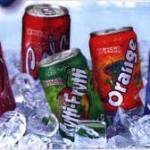
The importance of marketing has increased over the past several decades due to increasing rate of competition caused by globalisation, technological advancement, rising role of internet and other reasons. As a result, marketing has become an important aspect of the business for obtaining competitive advantage and therefore its main theories and principles are finding their wider applications. In other words, the necessity of marketing for businesses is confirmed by the fact that “businesses must sell products to survive and grow, and marketing activities help to sell their products” (Pride and Ferrell, 2008, p.16). This article critically analyses the importance of marketing in relation to the beverage industry in China through employing a range of marketing tools. Specifically the choice of marketing tools used to analyse beverage industry in China consist of marketing mix, PESTEL analysis and Porter’s Five Forces analysis. Marketing Mix Marketing mix can be defined as “a unique blend of product, place, promotion, and pricing strategies designed to produce mutually satisfying exchanges with a target market” (Lamb et al, 2008, p.44). In other words, effective strategies should be designed and implemented regarding all four components associated with a product or service – product, place, promotion, and pricing in order to ensure the sale of the product or service. This approach can be adopted by companies in beverage industry in China in order to ensure the success of the company in global level. A range of strategies are available managers in beverage industry in China can use to gain competitive edge regarding each component of the marketing mix. Product decisions China’s beverage industry managers can take in order to increase their market chare include the brand name of the beverage products, styling and safety of packaging, their expiry date etc. Marketing managers in beverage industry in China have…
